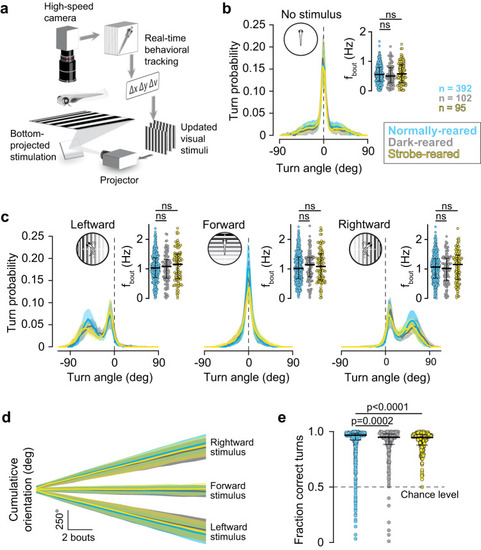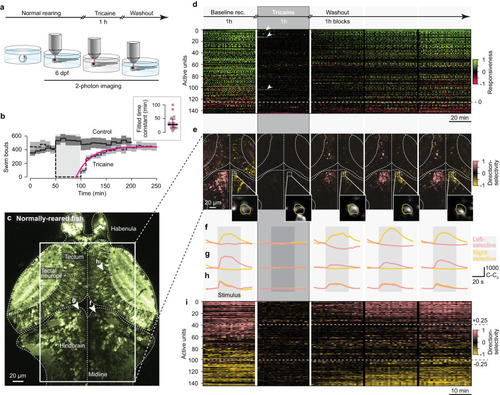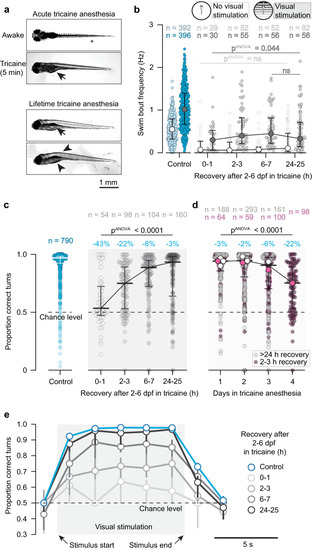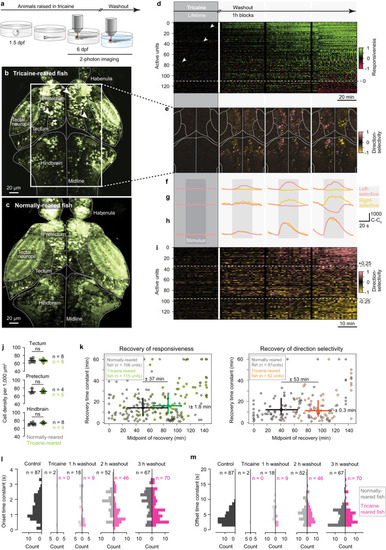- Title
-
Functional neuronal circuits emerge in the absence of developmental activity
- Authors
- Barabási, D.L., Schuhknecht, G.F.P., Engert, F.
- Source
- Full text @ Nat. Commun.
|
The OMR matures in the absence of visual experience. |
|
Tricaine anesthesia reversibly silences neuronal activity. |
|
Tricaine-reared animals can see, swim, and integrate visual stimuli. |
|
Visual circuits mature under silenced developmental activity. |




